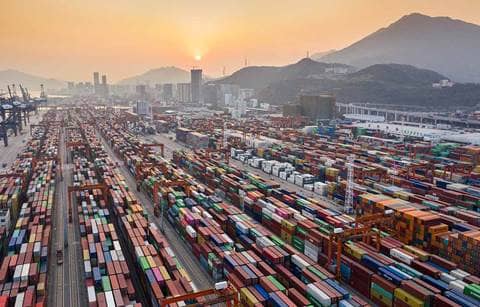On April 2, 2025, pursuant to Executive Order 14257, the United States imposed a 10% blanket duty on all imports into the United States with an effective date of April 5, 2025; and effective April 9, 2025, all goods (except those identified in Annex II of the order) imported from the countries identified in Annex I became subject to country-specific reciprocal tariffs. (Get the full details in our blog post on April 4, “United States to enforce reciprocal tariffs starting April 5, 2025.”)
On April 9, 2025, pursuant to Executive Order 14266, enforcement of these duties was suspended until July 9, 2025, to provide time for countries to negotiate trade agreements with the United States.
July 7 order extending suspension of tariffs
On July 7, 2025, the U.S. administration issued an executive order further extending the suspension effectuated by Executive Order 14266 until 12:01 a.m. Eastern Daylight Time on Aug. 1, 2025. As stipulated in the order, when the suspension is lifted on August 1, the tariffs stipulated in the April 2 order will become effective unless a letter is sent to those countries notifying them of a different tariff rate.
In a public statement on July 8, 2025, President Trump stated no further extensions would be granted beyond August 1.
The July 7 announcement applies to the International Emergency Economic Powers Act (IEEPA) reciprocal tariffs outlined in Sec. 2 of the April 2 order. The IEEPA tariffs on Mexico, Canada, and China are unchanged by this action, and tariffs on autos, automotive parts, and steel and aluminum under Section 232 of the Trade Expansion Act of 1962 remain in place.
Letters of adjustment to reciprocal tariff rates
Alongside the executive order on July 12, 2025, Trump began sending letters notifying countries of adjustments to their reciprocal tariff rates effective August 1. The following chart shows the applicable tariff rates for these countries as of July 9, 2025.
| Country | Effective reciprocal tariff | Adjusted reciprocal tariff starting August 1 |
|---|---|---|
| Algeria | 30% | 30% |
| Bangladesh | 37% | 35% |
| Brazil | — | 50% |
| Brunei | 24% | 25% |
| Bosnia-Herzegovina | 35% | 30% |
| Cambodia | 49% | 36% |
| Canada | 25%* | 35% |
| EU | 25% | 30% |
| Indonesia | 32% | 32% |
| Iraq | 39% | 30% |
| Japan | 24% | 25% |
| Kazakhstan | 27% | 25% |
| Laos | 48% | 40% |
| Libya | 31% | 30% |
| Malaysia | 24% | 25% |
| Mexico | 25%* | 30% |
| Moldova | 31% | 25% |
| Myanmar | 44% | 40% |
| Philippines | 17% | 20% |
| Serbia | 37% | 35% |
| South Africa | 30% | 30% |
| South Korea | 25% | 25% |
| Sri Lanka | 44% | 30% |
| Thailand | 36% | 36% |
| Tunisia | 28% | 25% |
*Note: Not part of the “Liberation Day” reciprocal tariff announcement. 25% tariff relates to the currently in-place fentanyl/migration IEEPA orders.
One notable exception from the list is Vietnam, which reached a trade understanding with the United States just days before the July 7 order. On July 2, Trump announced on Truth Social that Vietnamese goods entering the United States will face a 20% tariff (down from 46% in Annex I of the April 2 order) and a 40% tariff on goods that originate in another country and are routed through Vietnam to avoid tariffs. The administration hasn’t yet released official documentation of the agreement.
How this impacts you
The impact of the July 7 executive order will likely result in a push to bring inventory into the United States before the August 1 deadline. Of particular interest is progress on negotiations with Japan, South Korea, and Thailand — significant U.S. trading partners that, according to the above chart, are due for significant tariff increases if trade agreements aren’t reached by August 1. As negotiations continue to happen, we anticipate a significant effort to bring in inventory from those countries to leverage the current 10% tariff on products.
It’s also worth reminding companies that the legal implications of the Court of International Trade ruling on the IEEPA tariffs have yet to be determined, and while the ruling is on appeal, the tariffs remain in place. It’s important to maintain thorough documentation in the event that the IEEPA tariffs are overturned, and U.S. Customs and Border Protection is then required to refund any improperly collected tariffs.
What to watch for
Monitor the news, Whitehouse.gov, and the Federal Register for updates on deadline extensions, tariff letters, and country-by-country trade negotiations. Stay in close contact with your customs brokers and lawyers as you prepare for Aug. 1, 2025, when the full reciprocal tariffs take effect.





